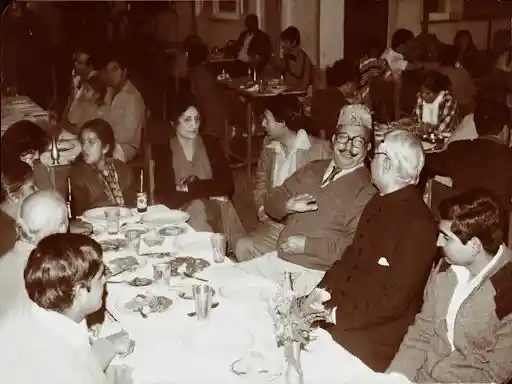Food and Partition: Migrators Carrying Along their Cuisines across Borders
The Indian cuisine that we see today has experienced multiple improvisations over the course of time. The partition of the subcontinent in particular played a crucial role in enhancing our cuisine and giving it the present form which we relish so much.

An old picture of Moti Mahal, Daryaganj; Image Source: motimahal.in
Partition of the Indian subcontinent in 1947 into the modern-day independent dominions of India and Pakistan is considered one of the greatest migrations in the history of the human race. It is estimated that as many as fifteen million people moved across the border over a period of merely four years. What followed the migrants along was not just the pain of leaving one’s birthplace but also that of starting anew from scratch amidst a new culture.
As the climatic setting changed, so did the food habits of the people but quite astonishingly the migrants held their native cuisine close to their hearts. It followed their footsteps from places like Karachi, Lahore, and Peshawar of present-day Pakistan to Delhi, Mumbai, and elsewhere in present-day India. Thus, an intermingling of cultures occurred across the borders.
Delhi in particular went through a major makeover in terms of its street food. In fact, there was absolutely no culture of food stalls or restaurants in Delhi prior to the partition. It was the migrants from Pakistan who brought with them new dishes which brought a significant change in the general appetite of the people. The Delhites who were earlier content with their Aloo Puri were now relishing paneer, naan, and butter chicken. Today, it is unbelievable to think that paneer which is one of the staples of Indian vegetarians was only introduced in Delhi after the Indo-Pak partition.
New food corners like Paranthe wali Gali in Chandni Chowk and Daryaganj started emerging as popular places for hanging out with family and friends. Moti Mahal, a popular restaurant of today, was founded around this time. Kundan Lal Jaggi, Kundan Lal Gujral, and Thakur Das Mago came up with the idea of opening a food restaurant in Daryaganj and tried to restore the Moti Mahal brand of Peshawar in the heart of India. Initially, they offered only tea, bread, tandoori chicken, and fish. One will be surprised to know that this small food stall was the very place of origin of buttered chicken and dal makhani. In fact, these were surprise discoveries at the stall, a result of casual experimentation.
Similar was the case for the states of Mumbai, Uttar Pradesh, and West Bengal. Street foods and dhabas came up at every corner of Uttar Pradesh. The land of Nawabs was experiencing a shift from the aristocratic palette that they were so used to. In Mumbai, the snacks scene was revamped with the coming of bhelpuri and other chats of the like. In West Bengal, the migrants from Bangladesh brought along with them various new techniques of cooking fish which is a staple of the Bengalis.
So, the Indian cuisine that we see today is a product of cultural exchanges from across the borders of both present-day Pakistan and Bangladesh. And that is what makes Indian cuisine so diverse and unique. It is quite popular among food lovers across the globe.


